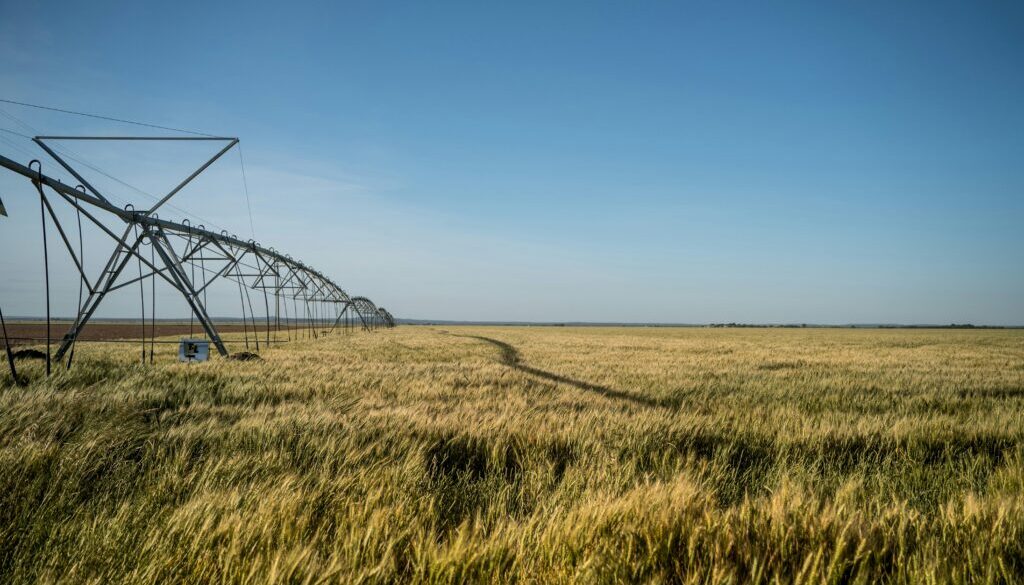New report questions USDA support for certain climate “smart” practices
A new analysis of US Department of Agriculture (USDA) funding for “climate-smart” conservation practices argues that several are unlikely to actually have climate benefits and one may even increase harmful emissions, though government officials say the analysis is deeply flawed and based on “incorrect assumptions.”
With nearly $20 billion from the Inflation Reduction Act (IRA) to be used between 2023 and 2026, the USDA is investing more money than ever in combating greenhouse gas emissions from agriculture, which makes up 10% of US emissions, according to the EPA.
The analysis from the Environmental Working Group (EWG), a nonprofit environmental research and advocacy organization examines elements of the USDA’s Environmental Quality Incentives Program (EQIP), which provides funding for conservation practices. Congress designated $8.45 billion for EQIP specifically. As part of that, an increasing amount of money is going towards so-called “climate-smart” practices aimed at sequestering carbon in soil or reducing greenhouse gas emissions.
EWG said that USDA is allowing farmers to claim this climate funding for implementing many practices that are unproven to help reduce emissions.
The report alleges, for example, that money can go toward a waste storage facility, used for livestock, would likely increase greenhouse gas emissions, according to the USDA’s own data.
The USDA expanded its “climate-smart” list – the specific practices that are eligible for funding – to allow 15 provisional practices, on which the USDA currently lacks data about their effect on emissions, EWG noted in its report.
USDA Press Secretary Allan Rodriguez called EWG’s analysis “fundamentally flawed, speculative, and rest on incorrect assumptions.”
“Unfortunately, EWG did not take into account the rigorous, science-based methodology used by USDA to determine eligible practices, nor the level of specificity required during the implementation process to ensure the practices’ climate-smart benefits are being maximized,” Rodriguez said in an emailed statement.
The single largest conservation practice funded over the past six years is the use of cover crops, according to EWG, with $505 million (9% of overall funding) going toward the practice. The use of cover crops is widely considered a strongly beneficial practice for soil health and sequestering carbon.
But only one of the other top 10 uses of the money is on the climate-smart list. Six of the new “provisional” practices were also in the top 10.
Anne Schechinger, Midwest director of EWG, said the USDA funding is largely going toward practices that are already popular among farmers.
For example, an EWG analysis found that between 2017 and 2022, EQIP gave farmers $1.7 billion — or 31 percent — of $5.5 billion to proven climate-smart practices, including cover crops and grassed waterways. But counting the provisional practices, that amount more than doubled, to $3.47 billion, or 63 percent of all EQIP spending.
Funding for EQIP more than doubled through the Inflation Reduction Act. This year, the Farm Bill will supply $2.4 billion of EQIP funding, while the Inflation Reduction Act will provide $3 billion to climate-smart practices.
“That’s why it’s so important to get this spending right on the right practices. Farmers aren’t doing much outside of this conservation funding to reduce their emissions,” said Schechinger, an agricultural economist who conducted the analysis.
This month, Sen. Cory Booker, Sen. Elizabeth Warren and members of the US House of Representatives sent a letter to Secretary of Agriculture Tom Vilsack asking for the funding to go toward proven practices, not provisional ones.
“There are a number of other practices, including regenerative prescribed grazing, cover cropping, and increased riparian buffers, that are far more effective at mitigating climate change and which can be employed by far more producers at lower cost per project,” the letter states.
Of particular concern is the inclusion of livestock and irrigation practices, Schechinger said. Livestock are one of the leading sources of emissions, and irrigation practices have drawn criticism as a warming climate is likely to lead to decreased water supplies in many areas of the county.
“Those practices are continuing to encourage concentrated animals,” she said.
But Rodriguez said EWG did not look at the requirements for funding projects with these practices. For example, livestock waste storage structures are only eligible when specifically implementing a compost-bedded pack structure, which is expected to reduce methane emissions. Irrigation practices are only eligible for existing systems that are supplied by fossil fuel energy, new irrigation systems cannot be funded. Roofs and covers are only eligible when a waste facility cover is used to capture biogas.
Schechinger said that EWG has asked USDA for its analyses of the provisional practices, but the agency did not provide it. Rodriguez said that NRCS will post that information soon.
Mario Herrero, a professor of sustainable food systems at Cornell who works on making international food systems more sustainable in the face of a changing climate, said the most important part of the program will be the implementation.
“They are practices that require investment and a lot of managerial capacity. It will really depend on implementing them in the correct way,” Herrero said. “Many of these practices have proven positive in other contexts. None of them are a silver bullet, but as a bundle, they would all contribute to some mitigation targets.”
He said the most important thing is the USDA having low barriers, so more people can access the funding, and to keep the levels of funding higher into the future. He said the US is decades behind other countries in this work.
“We need more of this. It shouldn’t be a short-lived program. It should be a program that is fully funded,” he said.
(Featured image by Joel Dunn on Unsplash.)
 EWG
EWG


